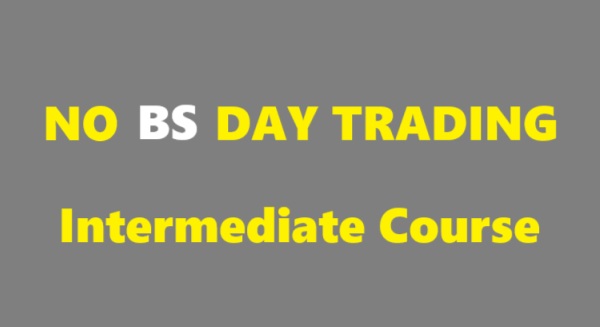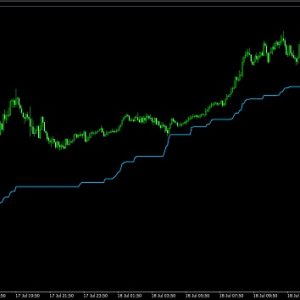No products in the cart.
No BS Day Trading – Intermediate Course
$147.00 $9.00
- Payment method: I will send the payment link to your email.
- Deliver by: Google Drive, Mega.nz
Category: Forex & Trading
No BS Day Trading demands a practical, results-oriented approach, cutting through the fluff and focusing on strategies that generate profits. This article explores how to navigate the complexities of order flow analysis and leverage intermediate-level techniques to elevate your scalping performance.
Table of Contents
No BS Day Trading
Navigating the world of day trading can feel like wading through a swamp of misinformation and empty promises. The term No BS Day Trading represents a refreshing antidote – a commitment to transparency, realism, and proven strategies. It’s an appeal to traders who are tired of the hype and are looking for actionable insights that can genuinely improve their profitability. Understanding the nuances of order flow is crucial for the No BS Day Trading philosophy, offering a tangible edge in the fast-paced market environment.
The Essence of “No BS” in Day Trading
“No BS” in day trading isn’t just a catchy phrase; it’s a commitment to a certain ethos. It’s about rejecting the allure of get-rich-quick schemes and embracing the hard work, discipline, and continuous learning necessary for success. It means being honest about the risks involved and not sugarcoating the challenges. It demands a data-driven approach, relying on evidence and analysis rather than gut feelings or fleeting trends. For example, instead of blindly following a “hot tip” from an online forum, a “No BS” trader would meticulously analyze the order book, volume profiles, and price action to make informed decisions. It is rejecting the temptation to over-leverage or chase losses and instead, sticking to a well-defined trading plan with strict risk management parameters.
Ultimately, the “No BS” approach prioritizes long-term sustainability over short-term gains. It’s about building a solid foundation of knowledge and skills that can weather market volatility and allow for consistent profitability over time. This involves focusing on mastering a few key strategies rather than trying to be a jack-of-all-trades. It’s about understanding one’s own limitations and biases and developing strategies to mitigate their impact on trading decisions.
Order Flow Analysis: The Foundation of No BS Day Trading
At the core of No BS Day Trading lies a deep understanding of order flow analysis. This involves interpreting the stream of buy and sell orders to gauge market sentiment, anticipate price movements, and identify potential trading opportunities. It’s about understanding the “why” behind the price fluctuations, not just the “what.” Analyzing order flow allows traders to see the battle between buyers and sellers in real-time to identify where institutional players are placing their orders. For example, a large buy order resting just below the current market price could signal a level of strong support, while a sudden surge in sell orders could indicate an impending price decline.
Mastering order flow requires developing the ability to read and interpret various market data points, including the order book (depth of market), time and sales data, and volume profiles. Traders need to learn how to identify patterns and anomalies in the order flow that can provide clues about the intentions of other market participants. This can involve looking for “iceberg orders” (large orders that are hidden from view), spoofing (placing and quickly canceling orders to manipulate prices), and other types of deceptive trading tactics.
Successful order flow analysis also requires a deep understanding of market microstructure, including the rules and regulations that govern trading activity. Traders need to be aware of the different types of market participants (e.g., market makers, high-frequency traders, institutional investors) and their respective roles in the market. Developing this level of expertise takes time and practice, but it can provide a significant edge for day traders who are committed to the No BS Day Trading approach. The mentioned course perfectly embodies this philisophy.
Mastering Scalping Techniques with Order Flow
Scalping, with its rapid-fire trades and tight profit margins, demands exceptional precision and timing. Order flow analysis becomes an indispensable tool in the scalper’s arsenal, enabling them to anticipate short-term price fluctuations and capitalize on fleeting opportunities. A No BS Day Trading approach to scalping emphasizes disciplined execution, risk management, and a relentless focus on profitability.
Scalpers using order flow analysis look for imbalances between buyers and sellers that suggest a potential breakout or reversal. For instance, if the order book shows a significant accumulation of buy orders at a particular price level, a scalper might anticipate a breakout to the upside and enter a long position. Conversely, a sudden surge in sell orders could signal an impending price decline, prompting the scalper to enter a short position. Volume is a crucial indicator in this approach. High volume confirms the strength of a price move, while low volume might suggest that the move is unsustainable.
Scalpers need to be adept at identifying key support and resistance levels, using volume profiles and order flow data to pinpoint areas where price is likely to encounter resistance or find support. They also need to be aware of economic news releases and other market events that could trigger sudden price swings and affect the order flow. The No BS Day Trading approach to scalping emphasizes that success is not about taking huge risks or chasing home runs, but rather about consistently generating small profits while minimizing losses.
Intermediate Course
Building upon a solid foundation of basic day trading principles, the Intermediate Course is designed to elevate your order flow analysis skills and empower you to execute advanced scalping techniques with precision and confidence. This course bridges the gap between introductory knowledge and real-world application, providing practical examples and in-depth explanations to enhance your understanding and trading performance. It is designed for traders already familiar with the foundational concepts, now seeking to delve into the specifics of the marketplace.
Unveiling Advanced Order Flow Concepts
The Intermediate Course delves into the complexities of order flow analysis, exploring advanced concepts that go beyond basic interpretation. It examines the impact of institutional order placement. The mentioned course helps traders become more observant and analytical, preparing them to apply these skills actively in live trading scenarios. Advanced concepts such as order book dynamics, the role of market makers, and the impact of high-frequency trading on order flow are all tackled. The main thrust is to give traders a deeper level of comprehension of how orders interact.
One key area of focus is on discerning subtle patterns in the order flow that can reveal the intentions of other market participants. This includes identifying iceberg orders, detecting spoofing and layering tactics, and recognizing the footprints of institutional order flow. For instance, an iceberg order (a large order that is hidden in the order book) can signal strong interest at a particular price level, while spoofing and layering can be used to manipulate prices or create artificial demand or supply. Understanding these tactics allows traders to avoid being trapped and to potentially capitalize on these manipulations. Spotting these patterns early can provide a valuable edge in making timely decisions and capitalizing on market inefficiencies.
The course also explores advanced charting techniques that integrate volume and order flow data. Analyzing the footprint charts that combine price, volume, and order flow allows traders to see the buying and selling pressure at different levels. The goal is to help the trader gain clarity on market sentiment and evaluate who is in control.
Practical Application Through Real Trade Examples
Moving beyond theoretical concepts, the Intermediate Course prioritizes practical application through real trade examples. By showcasing actual trades from previous webinars, the course demonstrates how to effectively utilize order flow analysis in various market scenarios. These trade examples provide valuable insights into entry and exit strategies, risk management techniques, and the overall decision-making process.
By dissecting various trades executed in real-time, the course presents a diverse range of techniques and scenarios, ensuring a well-rounded comprehension of order flow analysis and its uses. Traders get to watch and learn while the trade is reviewed systematically, with clear attention to all critical factors. Furthermore, the course goes into detail about the important mental elements of trading to offer traders advice on how to handle the pressure and deal with the unavoidable challenges. This transparency aims to show traders reality, creating realistic expectations and equipping them with practical problem-solving abilities that are directly applicable to live trading.
The course also emphasizes the importance of adapting one’s trading strategy to changing market conditions. A successful trader must be flexible and able to adjust their approach based on the prevailing market environment. The principles of No BS Day Trading highlight this point quite well. The trade examples are designed to incorporate this philosophy, demonstrating how to identify changes in market dynamics and adjust trading decisions accordingly.
Integrating Size and Volume into Your Trading Strategy
The Intermediate Course emphasizes the importance of size and volume in trading, acknowledging their crucial role in influencing market movements. Understanding how these factors impact order flow is essential for making informed trading decisions.
Analyzing volume in conjunction with price action allows traders to gauge the strength of a price move. A breakout accompanied by high volume is more likely to be sustainable than a breakout with low volume. Moreover, traders can use volume to identify potential areas of support and resistance. Heavy volume at a particular price level suggests that there is significant interest in that area, which could act as a barrier to future price movements. By understanding the relationship between volume and price action, traders can improve their ability to identify high-probability trading setups. The Intermediate Course aims to highlight this point thoroughly.
Order size also plays a critical role in shaping market dynamics. Large orders can have a significant impact on price, particularly in less liquid markets. Traders looking at order flow need to be aware of the presence of large orders and their potential impact on market movement. Recognizing when institutions are placing large orders can provide valuable insights into the broader market direction.
Strategies for Varying Trade Size and Managing Drawdowns
The Intermediate Course provides essential documentation that explores key strategies for managing risks, understanding trade size, and addressing drawdowns. These elements are essential for enduring in the long run and preserving capital. Learning to vary trade size according to risk tolerance and market circumstances is essential to the course’s goal.
The course emphasizes the necessity of having a well-defined risk management strategy. This includes determining appropriate stop-loss levels, position sizing, and overall account risk. Traders are taught how to calculate their risk-reward ratio and how to avoid over leveraging their accounts. Equally important is how to handle drawdowns, which are an unavoidable part of trading. The course teaches stress management techniques and how to reevaluate trading plans in times of loss, so temporary setbacks don’t become permanent.
The course also provides insight on when it is best to increase or decrease the size of transactions by assessing market volatility, account performance, and trade confidence. The course material promotes an analytical approach to trade sizing in order to maximize gains and control risks. The aim is to build a strategy that is both safe and flexible, enabling traders to adjust to market developments while consistently lowering the possibility of large losses.
Leveraging Cumulative Volume Profile and the Smackdown Setup
The Intermediate Course introduces strategies utilizing the cumulative volume profile and provides an in-depth look at the Smackdown setup derived from the author’s No BS ebook. These complex tools and setups are intended to improve strategic trading and provide specific benefits in a range of trading scenarios.
The Cumulative Volume Profile shows how trading volumes are dispersed at different price levels over a defined period, generally at the intraday level. This allows traders to see the most traded price levels (Point of Control) and significant value areas that serve as possible support and resistance. Understanding these areas helps traders locate probable inflection points and make better decisions about entry and exit points. This instrument helps determine if a price level will hold or break, based on volume concentration and historical trading activity.
The Intermediate Course also includes a thorough assessment of the Smackdown setup. This setup is covered in more depth in the “No BS” book by author. The Smackdown setup typically entails identifying certain order flow patterns and price action signals that signify a significant trading opportunity, frequently involving market reversals or breakouts. Traders are trained on how to identify the precise circumstances for employing this approach, which entails having a thorough awareness of volume, order flow, and possible catalysts for market movements. The setup is meant to give clear signals for initiating trades with a positive risk-reward ratio.
By concentrating on these techniques, the Intermediate Course ensures that traders are equipped with a wide array of tools for assessing market dynamics and spotting profitable trading opportunities. The practical application and focus on real-world trading scenarios enable traders to successfully integrate these approaches into their toolkits.
Conclusion
The Intermediate Course represents a significant step forward for day traders seeking a No BS Day Trading approach to scalping. By bridging the gap between basic knowledge and advanced application, the course empowers traders to analyze order flow with greater precision, execute trades with increased confidence, and manage risk more effectively. Through real trade examples, detailed documentation, and a focus on adapting to market conditions, the Intermediate Course provides a valuable resource for those striving for consistent profitability in the dynamic world of day trading.
Sales Page:_https://www.nobsdaytrading.com/courses/intermediate-course/
Be the first to review “No BS Day Trading – Intermediate Course” Cancel reply
Related products
Sale!
Forex & Trading
Forex & Trading
$4.99
Forex & Trading
$59.00
Sale!
Forex & Trading
$9.99
Forex & Trading
$34.99
Forex & Trading
$29.00
Forex & Trading
$29.90













Reviews
There are no reviews yet.